Pikes are one of the easiest and most entertaining fish to catch with your spinning rod. Let us introduce to you the 101 of the pike fishing and the vital knowledge of the pike lures. How, when, where to catch this mighty predator?
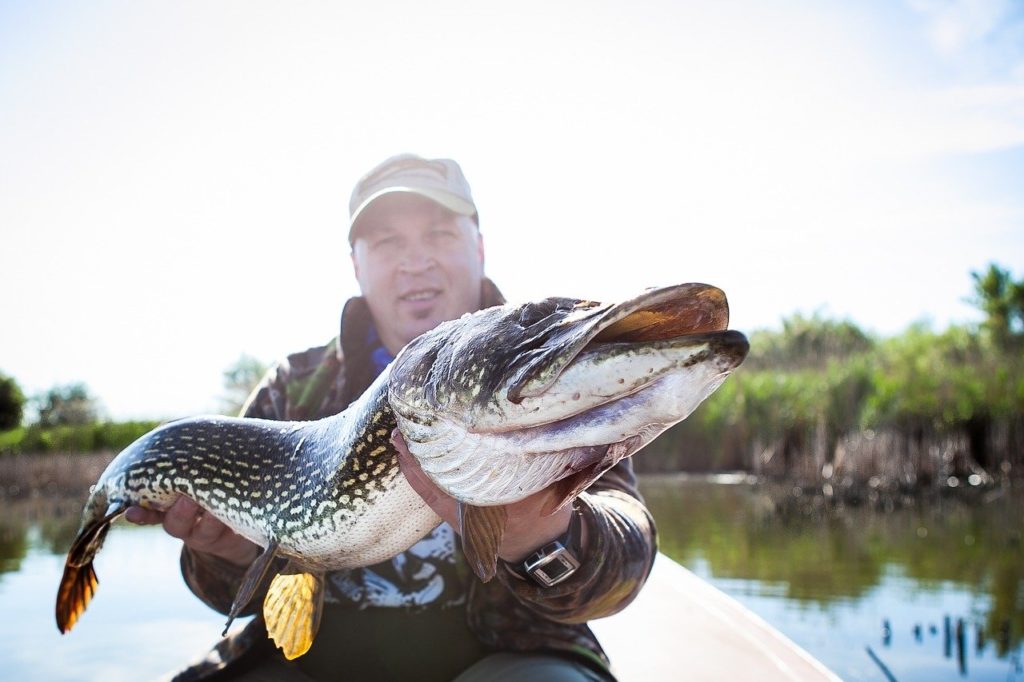
Biology and Behavior of Pike
Pike are long-bodied predatory freshwater fish with a pointed snout and large teeth found in rivers and lakes in both North America and Eurasia. They are common for lure fishing, because of their size. Pike are extremely strong and good fighters when they are on the hook. Many anglers choose to only catch pike because of the challenge of that fight.
Basic Biology
Pike are typical predators whose main prey is smaller fishes. They usually grow up to 20-25 kg and 1.5 m length with an average life span of 25 years. You may expect trophies that weigh up to 30 kg. They grow pretty fast. If their nutritional base is sufficient, they could weigh up to 1 kg within the first three years.
According to ichthyologists, pike can grow up to 75% of their body weight but this increase is guaranteed only if their diet is made up of other smaller pike. If the pike’s diet consists of other species only, they can only gain 25% of their weight during one year. This is why Swedish ichthyologists suggest that smaller pike make up 20 percent of their ration base.
Pike don’t throng. They usually live and hunt alone. They are very territorial fish, so it is unlikely to expect many pike in one spot, especially in rivers.
Basic Feeding Habits
They are usually caught using different types of methods such as lure fishing, live bait, dead bait, fly fishing, etc. Their ration mainly consists of carp, although worms, bugs, and maggots are also preferred. Pike also hunt for water birds, rats, and other water animals. This is something to consider when choosing a pike lure. So it is worth having pike-shaped lures in your tackle box for pike fishing.
Scientific Studies of Pike Eating Habits
Results from scientific studies of pike behavior and eating habits are very surprising. In one study, scientists placed various sizes of roaches, breams, and bleaks in a pool. The pike attacked the bigger roaches first, then the small breams and finally, the breaks.
The results were different when they put very big roaches and small breams in a pool. The pike chose to hunt for the small breams, and then for the big roaches.
These studies show that although small fishes were easier to hunt, pike prefer roaches.
In another test performed by Canadian scientists, they put one pike and lots of crucian carps in the pool. When there was only one pike, it attacked various sizes of crucians. Everything changed when they put more pike in the pool. Now the pike attacked the smaller fishes. This suggests that pike sense danger when there are other pikes around, and choose small fishes that are easier to hunt and digest.
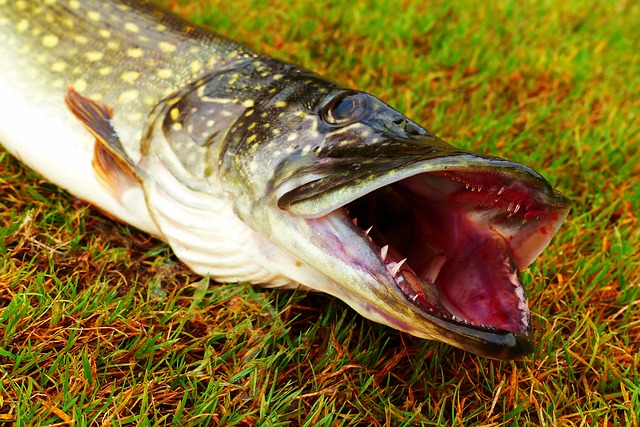
Important Notes:
- Pikes eat not only fishes but also various bugs, birds, and rats
- Pikes are cannibals and at least 20% of their ration are other pike
- Pikes tend to hunt alone, but their behavior changes based on the presence of other pike in the area
Active Periods for Pike
Pike are usually active in spring and autumn. They spawn in early spring. After that, they actively feed to regain lost mass and energy. For about a week, they remain within their spawning places. Later on, they choose shallow waters, where the sun heats the water and small fishes come. The pike are there looking for prey. After 2-3 weeks they move to deeper waters but remain active. This active period lasts up to 1 month.
Summer isn’t the best time to look for a trophy pike. They spread out all around the lake. This is the time when you would look for smaller 2-3 kg pike near more shallow grassy waters. The early morning and evening are the best times.
During autumn, pike feed more as they prepare for the cold period. As the water temperature drops, they become sluggish. So, they choose slower and bigger prey, so they don’t need to spend lots of energy chasing them. This is the key factor in choosing suitable pike lure and technique. Now, let’s focus on the game.
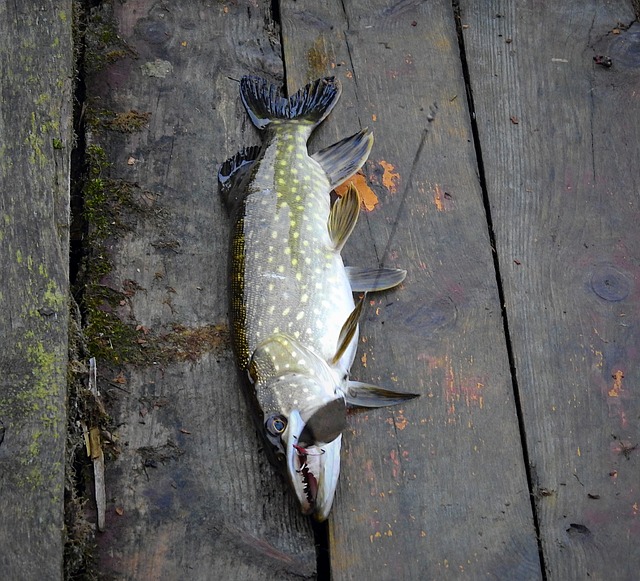
Pike Fishing Tactics
Now let’s talk about tactics and pike lures. In short, first you’ll need to find a pike, then offer a delicious bait.
How to Find a Pike?
Pike love the shelter of aquatic vegetation, where they spend most of their time. They only go out into the open waters for long periods in exceptional cases such as when there is a high concentration of small fish or conditions suitable for hunting. Thus, they are most likely to be found where there is an abundance of aquatic vegetation and small fish. These can be trees and fallen branches in water, various bays, coastal reed beds, huge rocks or other similar sites.
Pike Fishing Tactics
The key secret to luring a pike is SLOWNESS and PAUSES. Cast your bait slow, or if your bait moves fast (e.g. twitching lures), make longer pauses. Pauses may last up to 10 seconds, depending on the lure type. When you find a prospective place, you need to put in a good effort into testing it with your baits.
Main tips and tricks on pike fishing tactics:
- Look for a place with obstructions and aquatic vegetations. If it is a river, look for where the flow changes direction, makes vortexes or becomes slower
- Check all depth layers. Pike may choose from the bottom to the top. If the pike is not active, you may need to cast your lure right in front of the fish. So, be patient and make lots of casts in different depths.
- Test different types of baits with different actions. Pike may not choose soft lure but may love active vibrations caused by spinnerbait, or fast twitches and long pauses performed with minnow type lure. A significant change in lure action may provoke the pike to attack. This could be a key tactic when the pike is inactive, or only chases, but not attack the lure.
- Make your bait swim slow. Retrieve your bait twice slower than you intend and you’ll see more pike in your landing net. Slow bait with expressive, wide amplitude action is a very good choice.
- Make pauses. The longer, the better. That is if your bait allows, of course. Pike usually attack sick or injured fishes. On pause, your lure changes its swimming direction or stops and imitates such fish. This is a very effective pike fishing technique and very often pike attack stopped bait.
- Do not be afraid to experiment with lure size. As we mentioned earlier, many factors determine how pike choose their prey. Depending on the season, pike population, activeness, and many other factors, you should definitely try small and very big baits in one spot.
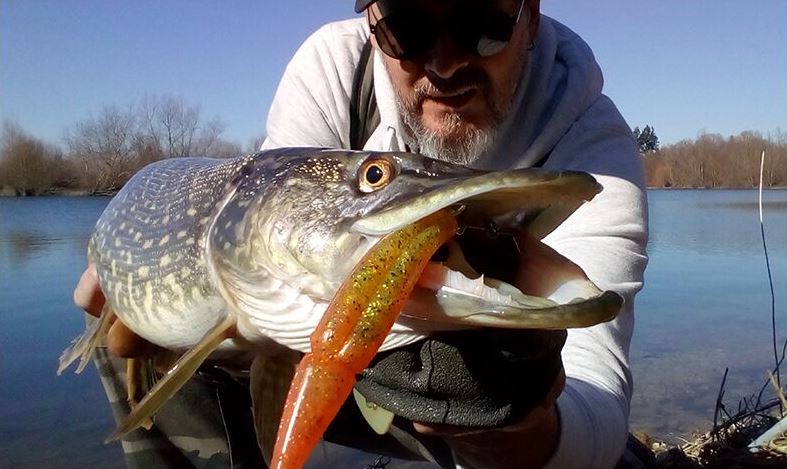
Pike Fishing Lures
There are so many types and categories for pike lures, that it is possible to write an entire book. Here, we discuss the pros and cons of each lure category and suggest which are the best for different fishing strategies.
Soft Lures
This is probably the most popular pike fishing lure. This bait has a huge variety of forms and modifications. Two main categories are twister and ripper lures. You may also find imitations of other creatures such as frog, maggot, bug, and worm. These are usually used for smaller predators e.g. perch fishing.
Paddle Tail Fish Imitation With a Slim Body
The first type would be a paddle tail fish imitation with a slim body. The best example is the well known “easy shiner” model. This is a very popular bait and many manufacturers have such models in stock. The slim body and a small paddle tail cause frequent small amplitude tail movements which could be the answer for inactive pike.
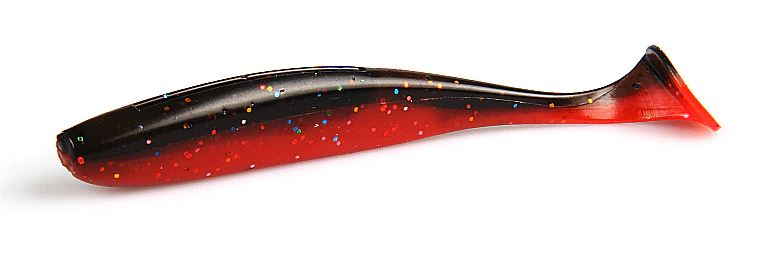
Fat Body Baits
Another type of lure is fat body baits with relatively big paddle tails. This is also called shad bait and one of the most popular lures of this type is the well known “shad teez” model. This lure offers a different type of action. Its expressive, sluggish, and wide amplitude tail movement, accompanied by rolling body action is great for slow retrieval. It is the best choice when you want to provoke pike by imitating lazy fish. This bait also helps when you want to keep the bait as long as possible in the pike’s attacking range.

Big Twister Baits With “C”-shaped Tails
These baits are also very effective in pike fishing. These soft lures have unique and expressive twirling tail movements. Big twister baits may be used for casting or trolling fishing types depending on jig head weight. These lures are versatile and good for slow or fast retrieves.
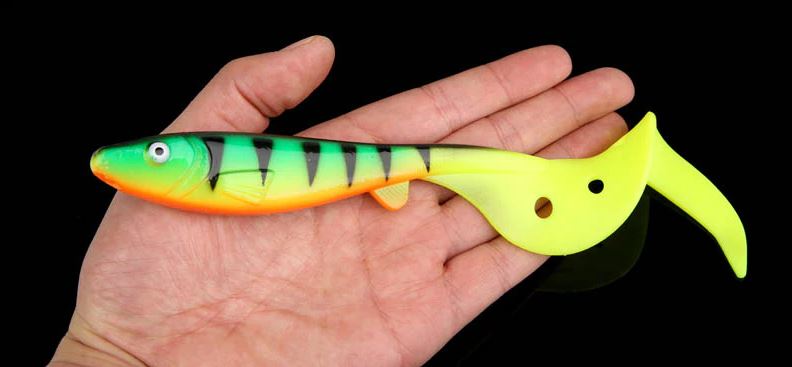
Smaller Soft Lures
Lures up to 12 cm mounted on offset hooks, allow you to make a cast in places with lots of water plants. This is a huge advantage. Also, you could use traditional jigs with hooks. Such a lure gives you the freedom to apply various retrieving techniques from simple “stop and go” to imitating “walking on the staircase”.
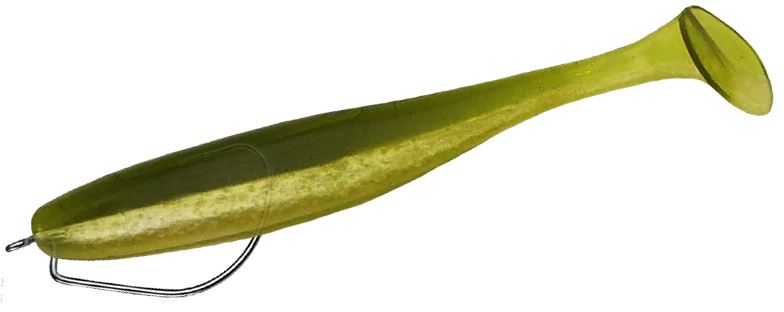
Why Soft Bait is Good Pike Lure
- It’s possible to fish in a wide depth range.
- Lots of retrieving techniques can be used with it.
- There are many varieties of lure shapes, which imitate various water creatures.
- There are many size options for different fishing conditions.
- A soft lure can be mounted on offset hooks, which allows for fishing in overgrown areas.
Metal Baits
This is a classical lure used in older times. Everyone would admit that this is a very effective lure. Unfortunately, today we see that it is undeservedly forgotten. This is obvious because this type of lure is cheaper than soft lures, minnow or crankbaits. Fishing shops don’t earn much profit. We can divide metal baits into two main categories – spoon baits and spinnerbaits.
Spinnerbaits
Spinnerbaits have various feathers and additional spoons that emanate very strong vibrations. These would greatly increase its action. It is a very effective lure in predator fishing, although it has some drawbacks. It must be retrieved constantly and only additional lure games could be received when varying retrieving speed. This lure is best when predators are active. Also, you could try it when no lure helps and you need to wake the pike up and force it to pay attention to your lure.
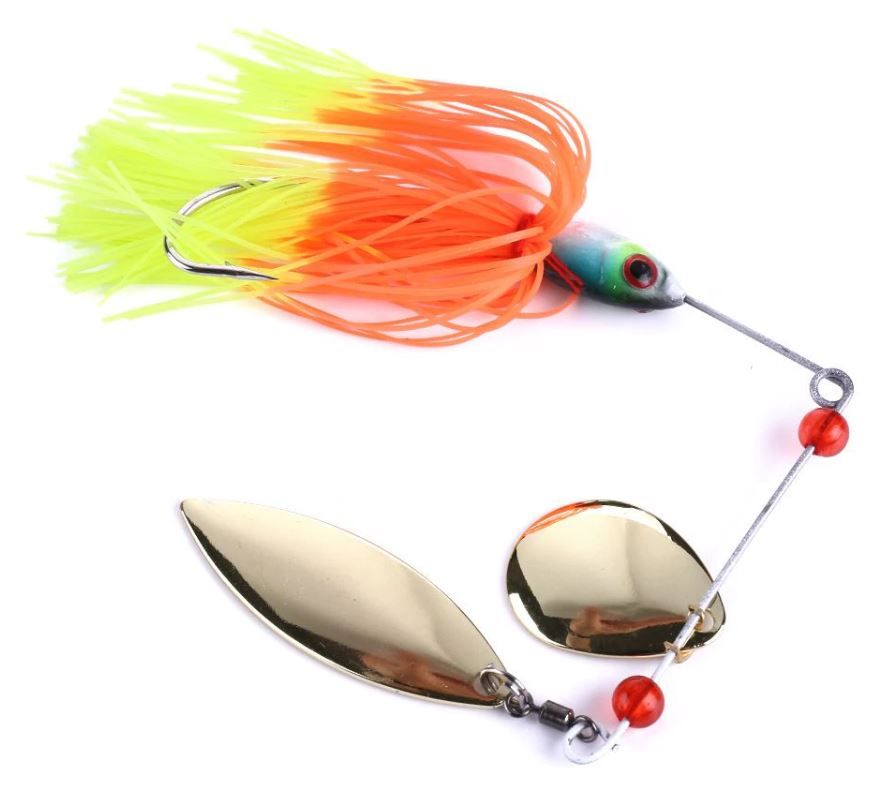
Spoon baits
Spoon baits are different lures having similarities with soft lures. A spoon bait’s key feature is its flipping action. It may be retrieved using many techniques, but simple “stop and go” are suitable for a start. This is a heavy lure, meaning that you could fish in bigger depths and it has good castability.
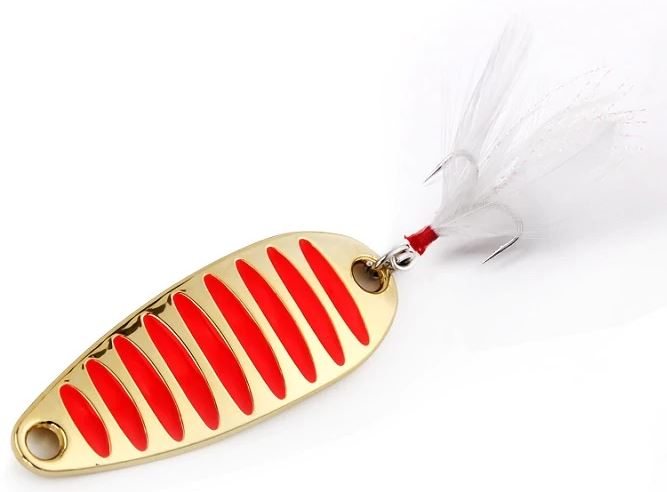
Why Metal Lures are Good for Pike Fishing:
- Spoon baits offer different retrieving techniques.
- Good castability.
- Spinnerbaits emanate very strong vibrations.
- It has various combinations with feathers and flies to increase its effectiveness.
- Long-lasting lures are not affected by the teeth of the pike. This is not said about wobblers and soft lures.
Minnow, Crank and Jerk Baits
These lures are made of wood or plastic. Crankbaits have very aggressive but small amplitude movements. Minnow or jerk baits don’t. Minnow lures may swim leaping from side to side of the main direction when twitched. In addition, all these baits may have different buoyancy (sinking, suspended or floating). All these features combined allow anglers to apply multiple retrieving techniques while fishing and expect better catches.
Crank-baits
Crankbaits are usually retrieved using the “stop and go” method. When on “stop”, depending on the lure’s buoyancy, they provide additional action (sink, stop in the same depth or float up). This greatly increases the chances to catch pike. They have a bent body and depending on their lip size, they could dive up to 8 meters or even deeper.
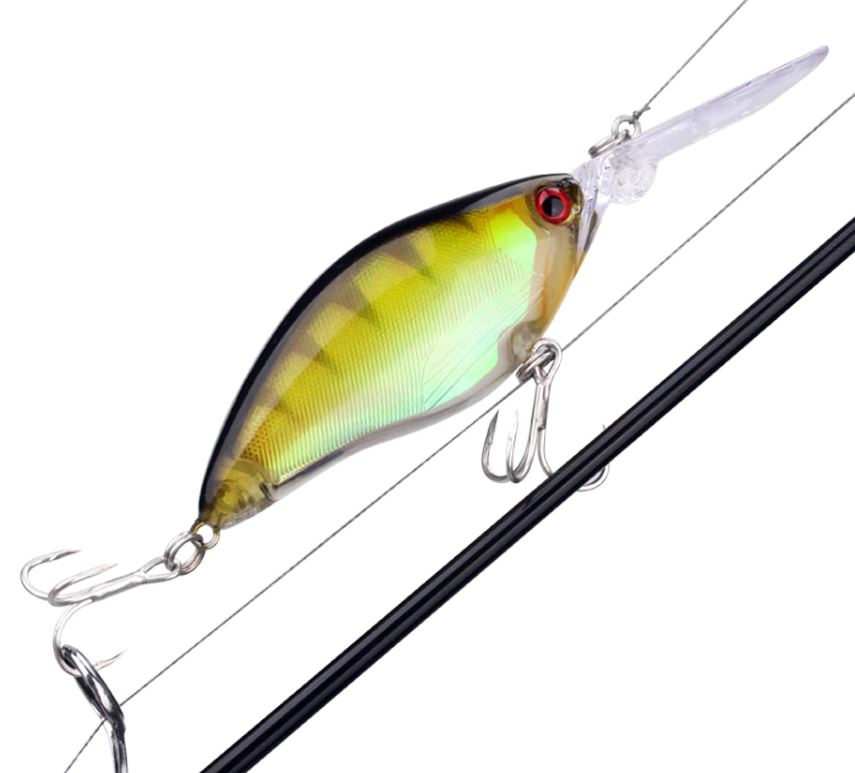
Minnow Lures
Minnow lures have stretched long bodies. They don’t have strong vibrative action as cranks, so minnows are usually used for the “twitching” method. Here, mainly suspending (or very slowly sinking or floating) lures are used. They allow long pauses and stop lure in one place which provokes the pike to attack the bait.
Most of the time pike bite on pause, so this is very important to correctly choose the length of the pause. You should test different pause intervals. The key secret of this method is that few twitches are combined with pause which could last up to 10 seconds.
After the last twitch, you should loosen the line so that the lure would still move and wobble using its inertia. For pike fishing, the usual lure size is 10-13 cm (up to 30 grams). Such lures have many hooks so they are not very effective in places with lots of water plants.
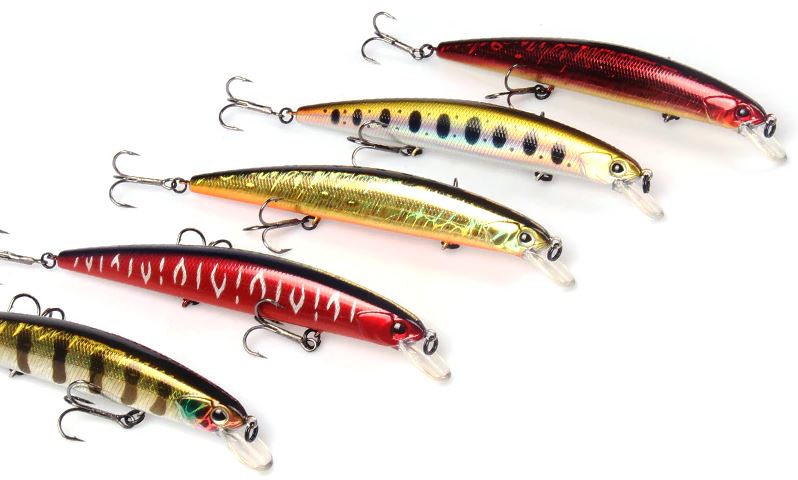
Jerk Baits
Jerk baits have some similarities although their action is a lot slower due to their weight. They are 10-12 cm in size and their average weight is about 70 grams. Special equipment is needed. Jerkbaits have no plastic lip, so even if they are of the sinking type, they still swim in low depth. Thus, you use them in low depths (up to 3 meters). These lures are massive and are usually used for trophy pike fishing.

Why This is a Good Pike lure:
- Jerkbaits are massive and suitable for big fish.
- It provides a huge range of retrieving techniques.
- It can be used for trolling or regular spinning.
- Has a very expressive movement.
- They usually have built-in metal balls that provide additional vibration and attract fish.
Happy Pike Fishing!
To sum it all up, pike fishing is very challenging, which is what attracts many anglers. Knowing its behavior, hunting habits, and using the right lures in various conditions, will give you a better chance at making a great catch! And if Pike is to extreme, try more delicate Trout fishing and press here!

1 thought on “Pike Fishing 101 (Basics, Lures, and Tactics)”
Comments are closed.